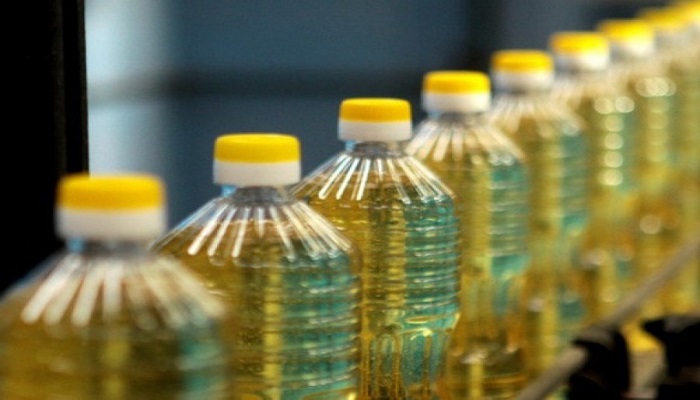QAMISHLI, Syria (North Press) – It was sunset time, foul smells were spreading in the atmosphere of the village of Gerbawi (Abu Rasin), southwest of the city of Qamishli, northeast Syria, due to the presence of a factory for vegetable oil.
Muhammad Youssef, a pseudonym for a 20-year-old young man from Gerbawi told North Press that they cannot stay outside, “The smell is unbearable.”
About two years ago, the Autonomous Administration of North and East Syria (AANES) announced the establishment of the “Golden Rose” factory for producing vegetable oil with an estimated production capacity of 300 tons per day.
Although the project interested the residents at the time, as some considered it a pioneer in achieving a kind of self-sufficiency, it caused severe damage to the environment due to the use of primitive methods for disposing of factory’s waste.
Youssef’s mother has been suffering from asthma for years, but during the past two years, doctors have noticed that her health condition is getting worse, especially in the summer.
Although it is not possible to say with certainty the cause of the recent intensification of asthma symptoms, her son said that air pollution resulting from the emissions of waste from the nearby factory is one of the main reasons.
Youssef’s mother avoids sleeping or going out into the yard of her house in the summer, because of the harsh smells emanating from the factory which is only one kilometer and a half away from the village.
“When the western winds blow, bad smells spread in our village. If the direction of the wind changes, the smells will go to other nearby villages,” Youssef noted.
“The smell is very bad. Not just for sick people. We avoid wandering and hiking in the village, especially in the summer, because of the intense smells,” the villager further explained.
All villagers indicate what Youssef had said “The smell polluted the air of the village, which is known for its beautiful nature,” residents stressed.
Dangerous waste
The factory relies on cotton, soybean and sunflower seeds in the production process, so that the first process of production starts with the row materials.
The first stage is sifting, in which the seeds are separated from the cotton and then transferred to the cleaning machine, whose function is to remove the cotton plankton. After that, the seeds are moved to a press, which separates the oil from the meal with the help of hot steam. The meal is sold as organic fertilizer, while the crude oil is later processed at a refining section.
The refining section is one of the most important sections in the factory, where the oil is treated to make it usable for human consumption through the use of sodium hydroxide to remove gums, acidity, color and plankton, which is similar to the process of washing oil.
The waste, which must be disposed of through scientific methods, is the liquids resulting from the washing process, and consists of soap, highly effective sodium hydroxide, and other toxic substances.
However, those in charge of the laboratory dispose of these liquids in very primitive ways, without any regard for environmental conditions.
The liquids are transported through channels to a hole next to the factory by seizing quantities of them in a ditch in an agricultural land, while additional quantities are transported through tanks to the city of Qamishli, which has a high population density, to be disposed of into the sewage channels.
Shiyar Ali, an engineer interested in environmental affairs, told North Press that the use of non-isolated ditches to store waste is absolutely unacceptable, especially since the quantities stored are very large.
He emphasized that the soil will not be completely suitable for agriculture, and the groundwater, surface wells, and wells near the site will be polluted, and these materials will seep into the depths of the earth.
Ali said that waste disposal in the sewage network has very bad effects, “because the city’s sewage channels flow into the river, and the factory waste contains radioactive and carcinogenic materials that have dangerous effects on both humans and animals.
Scientifically, the incorrect disposal of Waste Vegetable Oils (WVO) causes severe damage to the environment, as the subsoil is damaged, sewage networks are clogged, and groundwater and rivers are affected.
This is the case for the AANES, which suffers from almost a lack of necessary capabilities and expertise, in addition to the difficulty of delivering treatment equipment due to the economic sanctions imposed on the country.
Does WVO pollute drinking water?
In the sewage canal maintenance office in Qamishli, the office supervisor, Fener Hassan, takes a pen and paper and begins to draw the network diagram. He confirms that sometimes drinking water mixes with sewage water, but they quickly deal with the problem.
The supervisor reveals that the area in which blockages occur in the sewage network is the same area within the scope of the oil factory whose waste is emptied into the sewage network.
In addition, the sewage networks in Qamishli are connected to collection stations, all of which flow into the Jaghjagh River, the only river in the city, which leads to killing and harming living organisms due to the difficulty of decomposing the waste because it contains highly effective toxic compounds.
Farmers depend on the river’s water to irrigate their crops, which affects the genetic the crops, according to the studies we reviewed.

